
Gothenburg is the capital of Västra Götaland County in Sweden. It is the second-largest city in Sweden, after the capital Stockholm, and the fifth-largest in the Nordic countries. It is situated by the Kattegat on the west coast of Sweden, with a population of approximately 600,000 in the city proper and about 1.1 million inhabitants in the metropolitan area.

Stockholm University is a public research university in Stockholm, Sweden, founded as a college in 1878, with university status since 1960. With over 33,000 students at four different faculties: law, humanities, social sciences, and natural sciences, it is one of the largest universities in Scandinavia.
IMAX is a proprietary system of high-resolution cameras, film formats, film projectors, and theaters known for having very large screens with a tall aspect ratio and steep stadium seating, with the 1.43:1 ratio format being available only in few selected locations.
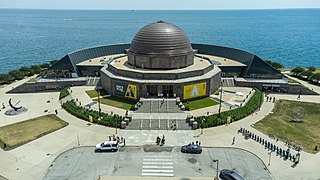
The Adler Planetarium is a public museum in Chicago, Illinois, dedicated to astronomy and astrophysics. It was founded in 1930 by local businessman Max Adler. Located on the northeastern tip of Northerly Island on Lake Michigan, the Adler Planetarium was the first planetarium in the United States. It is part of Chicago's Museum Campus, which includes the John G. Shedd Aquarium and The Field Museum. The Planetarium's mission is to inspire exploration and understanding of the universe.
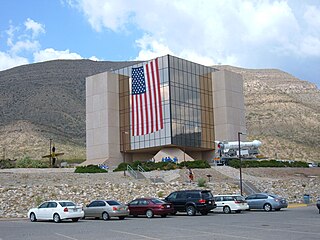
The New Mexico Museum of Space History is a museum and planetarium complex in Alamogordo, New Mexico, United States, dedicated to artifacts and displays related to space flight and the Space Age. It includes the International Space Hall of Fame. The Museum of Space History highlights the role that New Mexico has had in the U. S. space program, and is one of eight museums administered by the New Mexico Department of Cultural Affairs. The museum has been accredited by American Alliance of Museums since 1993. The museum is also a Smithsonian Affiliate.

Nymphaea alba, the white waterlily, European white water lily or white nenuphar, is an aquatic flowering plant in the family Nymphaeaceae. It is native to North Africa, temperate Asia, Europe and tropical Asia.
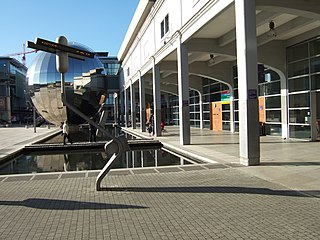
We The Curious is a science and arts centre and educational charity in Bristol, England. It features over 250 interactive exhibits over two floors, and members of the public and school groups can also engage with the Live Science Team over programming in the kitchen, studio and on live lab. We The Curious is also home of the United Kingdom's first 3D planetarium. The centre describes its aim as being "to create a culture of curiosity".
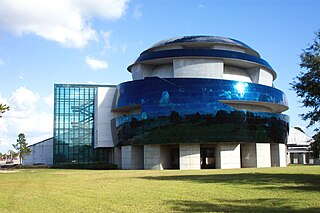
The Museum of Science & Industry (MOSI) is a non-profit science museum located in Tampa, Florida.

The Museum of Science (MoS) is a nature and science museum and indoor zoological establishment located in Science Park, a plot of land in Boston and Cambridge, Massachusetts, spanning the Charles River. Along with over 700 interactive exhibits, the museum features a number of live and interactive presentations throughout the building each day, along with scheduled film showings at the Charles Hayden Planetarium and the Mugar Omni Theater. The Museum is a member of the Association of Science and Technology Centers (ASTC) and the American Alliance of Museums (AAM). Additionally, the Museum of Science is an accredited member of the Association of Zoos and Aquariums (AZA), being home to over 100 animals, many of which the museum gained after they were surrendered, confiscated, rescued or rehabilitated.

The Saint Louis Science Center, founded as a planetarium in 1963, is a collection of buildings including a science museum and planetarium in St. Louis, Missouri, on the southeastern corner of Forest Park. With over 750 exhibits in a complex of over 300,000 square feet (28,000 m2), it is among the largest of its type in the United States.
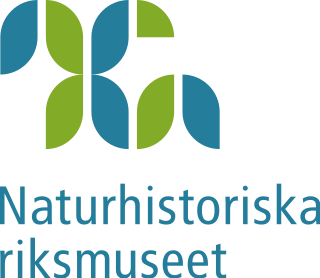
The Swedish Museum of Natural History, in Stockholm, is one of two major museums of natural history in Sweden, the other one being located in Gothenburg.

The Fleet Science Center is a science museum and planetarium in Balboa Park in San Diego, California. Established in 1973, it was the first science museum to combine interactive science exhibits with a planetarium and an IMAX Dome (OMNIMAX) theater, setting the standard that most major science museums follow today. It is located at the east end of the El Prado Drive walkway, next to the Bea Evenson Fountain and plaza in central Balboa Park.

The Denver Museum of Nature & Science is a municipal natural history and science museum in Denver, Colorado. It is a resource for informal science education in the Rocky Mountain region. A variety of exhibitions, programs, and activities help museum visitors learn about the natural history of Colorado, Earth, and the universe. The 716,000-square-foot (66,519 m2) building houses more than one million objects in its collections including natural history and anthropological materials, as well as archival and library resources.

The Houston Museum of Natural Science is a natural history museum located on the northern border of Hermann Park in Houston, Texas, United States. The museum was established in 1909 by the Houston Museum and Scientific Society, an organization whose goals were to provide a free institution for the people of Houston focusing on education and science. The museum complex consists of a central facility with four floors of natural science halls and exhibits, the Burke Baker Planetarium, the Cockrell Butterfly Center, and the Wortham Giant Screen Theatre. In 2022, the museum received 1,520,000 visitors, making it seventh on the List of most-visited museums in the United States, and was the third most-visited U.S. science museum. Much of the museum's popularity is attributed to its large number of special or guest exhibits.

The Milton J. Rubenstein Museum of Science and Technology is a science and technology museum located in the Armory Square neighborhood of Downtown Syracuse, New York. The Museum includes 35,000 square feet of permanent and traveling exhibits, Science Shop, and several programs and events. The MOST is located in the former Syracuse Armory.
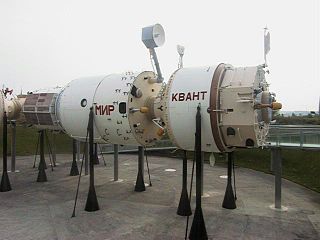
The Cité de l'espace is a scientific discovery centre in France focused on spaceflight. It was opened in June 1997, and is located on the eastern outskirts of Toulouse. It was carried out on the initiative of the Town Hall of Toulouse with the participation of numerous partners such as the Regional Council of Midi-Pyrénées, the Ministries of Equipment, Transport, Defence, National Education, Research and Technology, the National Center for Space Studies (CNES), Météo-France, EADS, Astrium, among others. As of 2012, there had been more than four million visitors.
Smithsonian Theaters is an operating unit of Smithsonian Enterprises, the revenue-generating business division for the Smithsonian Institution, United States.
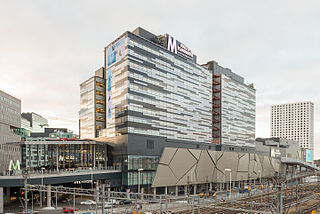
Westfield Mall of Scandinavia is a shopping mall located in Solna in Stockholm, Sweden. It was inaugurated on November 12, 2015, and is the fourth largest mall in the Nordic countries with 224 stores and restaurants, many of them with double-height storefronts up to 8 m (26 ft) tall. 50,000 shoppers showed up to the opening of the mall. About 20-25% of the leasable area is dedicated to experiences, there are 44 restaurants and a 15 screen multiplex with the first purpose-built commercial IMAX theatre in the Nordic region. The shopping mall has 3,700 parking spaces and a retail gross leasable area of 101,048 m2 (1,087,670 sq ft). The building also house an additional 42,000 m2 (450,000 sq ft) of office space and condominiums.

The Jewish Museum in Stockholm, Sweden, is devoted to objects and environments related to Jewish religion, tradition, and history, particularly in connection to Judaism in Sweden.

Björkborn Manor is a manor house and the very last residence of Alfred Nobel in Sweden. The manor is located in Karlskoga Municipality, Örebro County, Sweden. The current-standing white-colored manor house was built in the 1810s, but the history of the property is older.



















